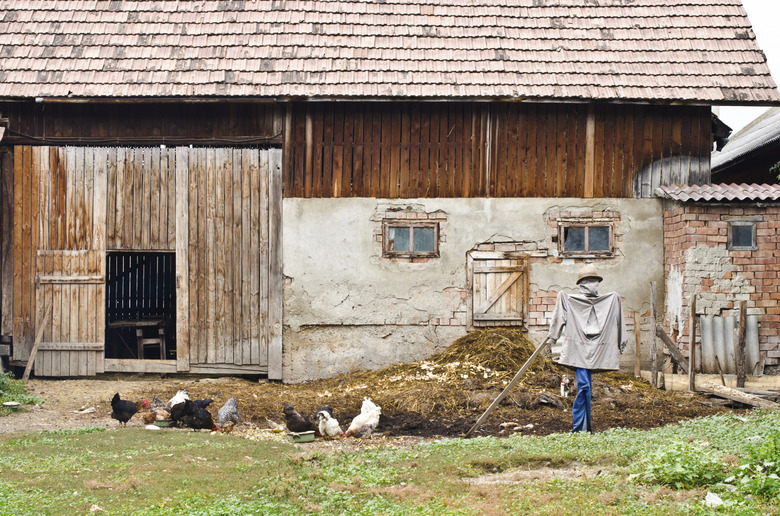How To Keep Birds Out Of Mulch
Changing the type of mulch you use and employing benign scare tactics are the main options for keeping birds out of mulch. The moist, nutritious environment created by organic mulch as it breaks down not only enriches soil; it encourages a bird food supply in the form of worms, grubs and insects. U.S. state and federal laws protect all wild bird species, with the exceptions of English sparrows, starlings and pigeons. It's illegal to possess, trap or kill other wild birds without a permit, according to the U.S. Fish and Wildlife Service's website. The laws also protect bird nests, eggs and young birds, including on private property.
Assess the Problem
Assess the Problem
Worms and other live creatures aren't the only attraction in mulch for birds. Bird feeders' cast-off seeds and garden plants' seeds and nuts that fall in mulch are a feast for birds. If the birds are after fallen fruit on the mulch, then remove the fruit regularly to reduce that attraction for birds, as well as wasps, ants, racoons, rats and other opportunistic feeders. If birds prey on specific plants or your vegetable patch, then blocking the birds from reaching their targets can save your plants or harvest. For example, a simple structure made of galvanized mesh, such as poultry wire, can protect plants from above and all sides for a bird-free garden area. Check your locality's codes to ensure such a structure is allowed before erecting it. Bird netting also is a means to protect vulnerable crops, including fruit on trees.
Change the Mulch
Change the Mulch
Inorganic mulch reduces the attraction for birds. Rock mulch works well for decorative use in uncultivated areas and can be used around succulents and shrubs and in rock gardens. All types of rocks, including lava rock, pea gravel and coarse granite gravel, are inorganic mulches. They don't attract termites, ants and other insect pests. They don't break down so don't have to be replaced, provided you use landscape fabric under them to keep them from becoming embedded in the soil and you use edging to keep them from being displaced from their bed by water. Avoid using white gravel, which can be a source of additional heat and glare in a sunny garden.
Change the Habitat
Change the Habitat
If the problem is the mess made by birds digging and kicking the mulch, then put bird netting over the mulch, or surround it with edging that is at least 3 inches tall. Bird netting also prevents wind from blowing mulch out of plant beds and other landscape areas. A row of rocks placed close together keeps mulch in a bedding area and can be used to anchor netting. If you have bird feeders, move them away from the mulch to prevent stray birdseed from getting in the mulch and attracting birds, but position the bird feeders nearby to distract the birds from your mulched garden. Also pull, mow or otherwise decimate weeds before they flower and produce seeds that will draw birds to the mulch.
Employ Scare Tactics
Employ Scare Tactics
Birds, especially the bold species such as crows and bluejays, can become accustomed to scare tactics and learn to ignore them. It helps to use more than one type of scare device, and to move the devices. Flags, reflective balloons and bird tape — shiny material that reflects light and makes a crackling sound in the breeze — can help deter birds from mulched areas. Tie such a scare device to fencing or a branch, or staple it to plant stakes. Bobble-headed owls mounted in your mulched beds will help scare birds because birds tend to avoid their predators, which include owls. Some versions of scare-device owls emit a screech that provides an added deterrent for birds.
References
- Clemson Cooperative Extension: Mulch
- Colorado State University Extension: Mulching with Wood/Bark Chips, Grass Clippings and Rock
- Texas A&M AgriLife Extension: Figs
- U.S. Fish and Wildlife Service: Migratory Bird Program — Backyard Bird Problems
- Washington Department of Fish and Wildlife: Living with Wildlife — Crows
